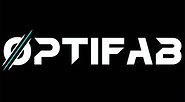
An Intelligent Thermal Management Tool for Your 3D Printing Process
Controlling material behavior at the micro/macro levels in 3D printing can be tough, often leading to high costs, extra steps, and long production times.
Using data from 3D printers' in-situ monitoring systems and thermal simulations, we craft customized, smart print strategies for any material and design specifications, ensuring uniform, high-quality production.
This approach reduces qualification expenses, shortens manufacturing cycles, and improves product quality, fundamentally changing how manufacturing precision is achieved.
Invest in Efficiency and Quality with OptiScan's AI-Based Print Strategies, Minimizing Costs Linked to Learning Curves and Print Failures
FLAWLESS MANUFACTURING
High Part Quality, Zero Defect – Elevate Production Reliability
NO POST PROCESSING
Mastering Heat Transfer and Residual Stress for Avoiding Deformation
HIGH PRODUCTIVITY
Speed Up Production by Shortening Time-Consuming Steps of 3D Printing
CUSTOMIZATION
Site-Specific Property Tailoring in Complex Geometries
How OptiScan Works
Analyze, Optimize, Control
OptiScan uses AI to look at each layer of the 3D printing process, taking into account the shape of the part and how heat moves through it. It uses in-situ monitoring data and detailed heat models to figure out the best way to print each part. This ensures the heat is evenly spread out and controlled properly at every step, making sure the final product comes out just right.

Partners and Customers

CANADIAN Innovation, GLOBAL Solutions
OptiFab Technologies is proud to empower local manufacturers for global impact.

@ 2024 OptiFab Technologies, Inc
OptiFab Technologies
295 Hagey Blvd, Waterloo, ON N2L 6R5



